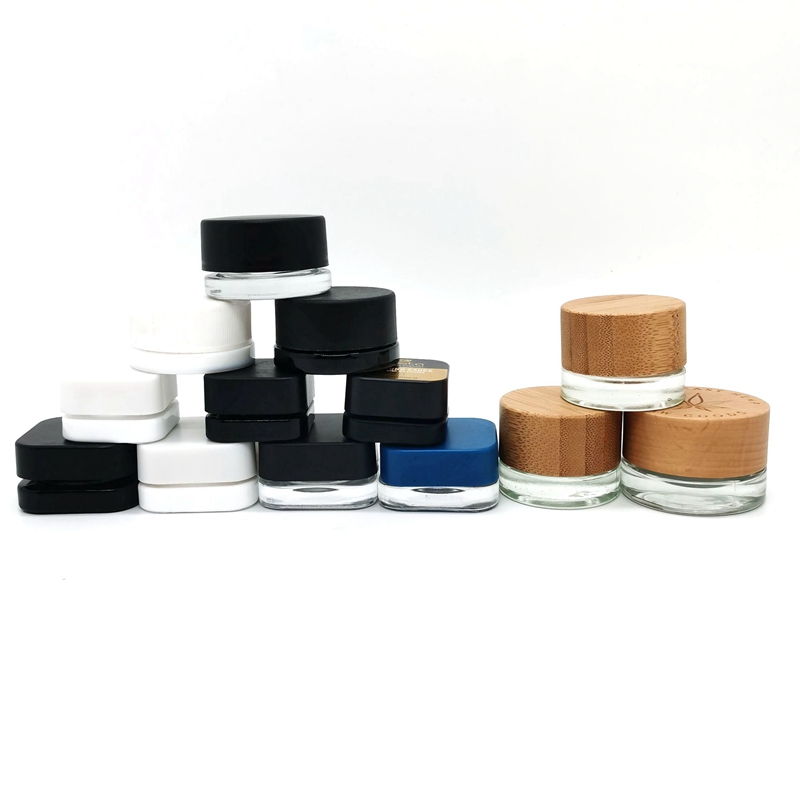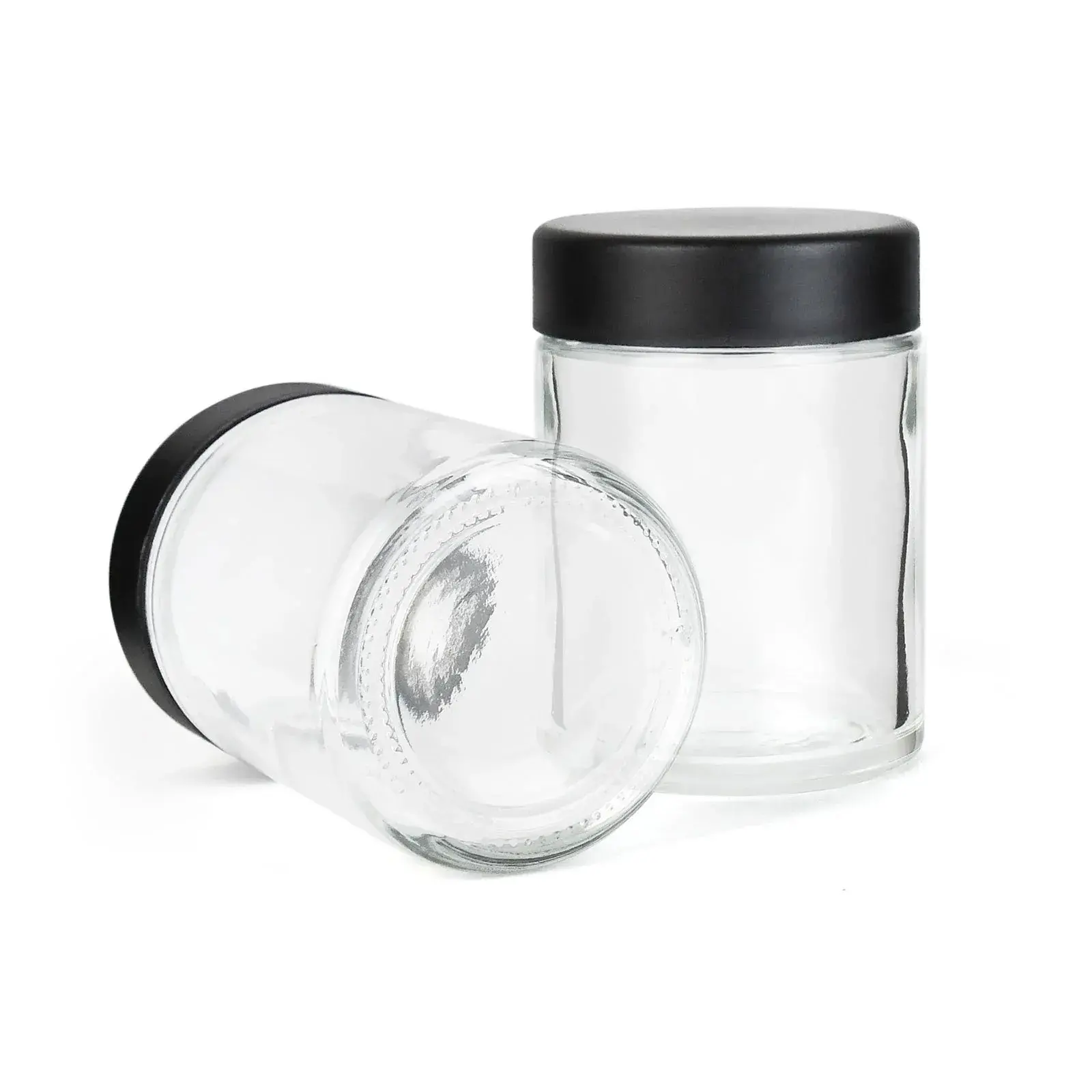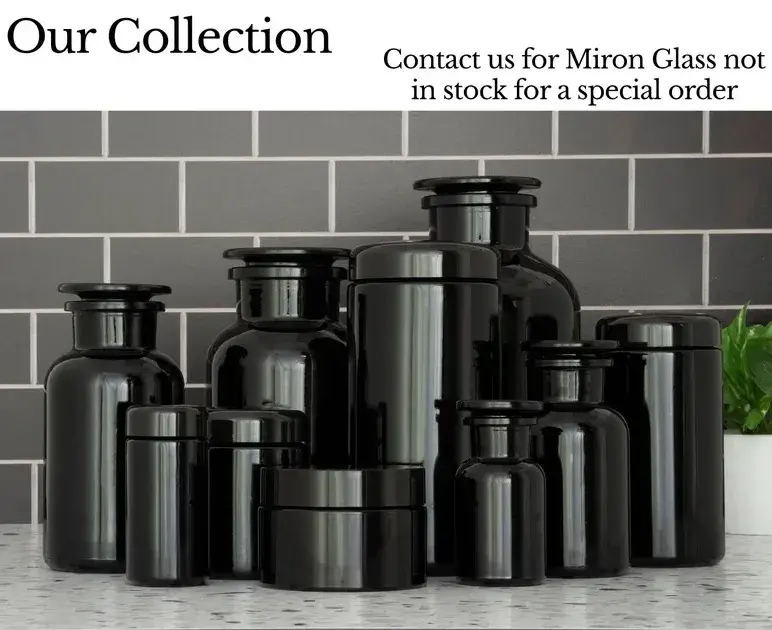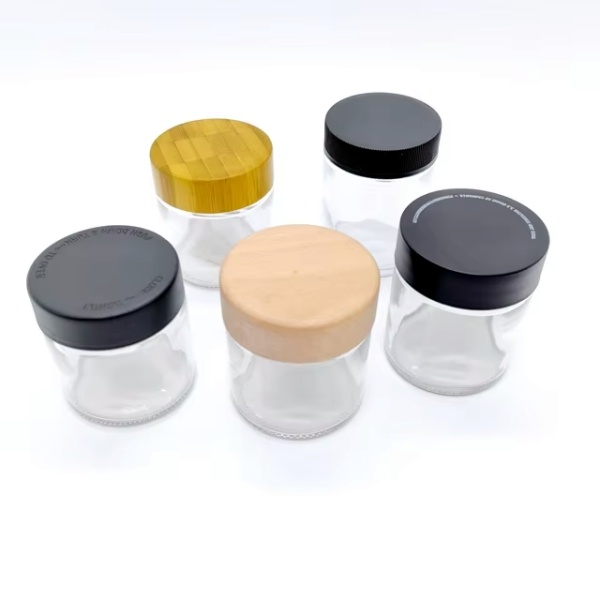Cannabis concentrates represent some of the most potent and diverse products in the cannabis market today. From ancient hashish traditions to modern solventless extract techniques, the world of cannabis concentrate production is rich with history and innovation. Understanding these products – what they are, how they're made, and their historical roots – is crucial for anyone involved in the cannabis industry, especially for businesses like yours, Mark, that source and supply packaging. This article delves into the fascinating evolution of cannabis concentrates, exploring different types like hash, rosin, live resin, shatter, and BHO, explaining their production, and considering the future of this dynamic category of concentrates. Knowing the nuances of each type of concentrate helps ensure you select the best packaging solutions, meeting quality, safety, and compliance standards – key factors for success in this competitive market.
What Exactly is a Cannabis Concentrate?
So, what exactly sets a cannabis concentrate apart from regular cannabis flower? Think of it as the essential essence of the plant, distilled down. Concentrates are products made by processing the cannabis plant to isolate its most desirable compounds, primarily cannabinoids (like THC and CBD) and terpenes (which provide aroma and flavor, and influence effects). The goal is to remove excess plant material and capture a much higher potency of these active ingredients than you'd find in the raw flower. This process results in a potent cannabis product that can take many forms, from oils and waxes to solids like shatter.
The magic lies in the trichomes. These are the tiny, crystal-like glands covering the surface of cannabis flowers and leaves. They are the plant's natural factories, producing the bulk of the cannabinoids and terpenes. Essentially, creating a concentrate is all about efficiently collecting these trichomes from the plant matter. Whether it's through physical separation (solventless methods) or using chemical aids (solvent-based methods), the aim is to gather this precious cannabis resin.
The term "extract" is often used interchangeably with concentrate, but there's a subtle difference. Technically, an extract is a specific type of concentrate made using a solvent (like butane, CO2, or ethanol) during the extraction process. Products like BHO (Butane Hash Oil), shatter, and budder fall into this category. Concentrates made without solvents, like hash or rosin, are sometimes referred to specifically as solventless concentrates. Understanding this distinction is becoming increasingly important as consumer preferences evolve.

How Did Ancient Hashish Traditions Shape Today's Concentrates?
The history of concentrates didn't begin with modern labs; it stretches back centuries, perhaps even millennia, with the creation of hashish. Originating likely in Central Asia or Persia, traditional hash making represents the earliest known form of cannabis concentrate. Early methods were purely mechanical, involving rubbing dried cannabis flowers between the hands to collect the sticky resin glands (trichomes), which were then pressed into blocks or balls. This simple, solventless technique produced a potent hashish enjoyed for recreational, spiritual, and medicinal purposes across the Middle East, North Africa, and parts of Asia for generations.
These hashish traditions laid the groundwork for future innovations. Techniques evolved, like dry sifting (using screens to separate trichomes from the plant) and later, ice water extraction (leading to bubble hash). These methods refined the process of isolating the cannabis resin without chemicals. The knowledge passed down through these cultures – understanding the importance of the trichome gland and developing ways to collect it – is the foundation upon which the entire modern concentrate industry rests.
While today's high-tech extraction methods might seem worlds away, the core principle remains the same: separate the potent trichomes from the less active plant material. The enduring popularity of hash and the rise of modern solventless concentrates like rosin demonstrate a continued appreciation for these traditional, natural techniques. Recognizing this history of hashish provides valuable context for the evolution of cannabis concentrates.
Why Did Solvent-Based Extraction Methods Like BHO Become Popular?
As cannabis extraction techniques advanced, particularly in the latter 20th and early 21st centuries, solvent-based methods emerged, offering new levels of efficiency and producing different consistencies. Butane Hash Oil (BHO) became particularly prominent. This method uses butane, a hydrocarbon solvent, to strip the desirable cannabinoids and terpenes from the plant material. The butane is then purged (removed) from the final product, ideally leaving behind a highly potent cannabis extract.
The popularity of BHO and similar solvent extraction methods (using solvents like propane or ethanol) surged for several reasons. Firstly, they allowed for large-scale production and high yields, making concentrates made this way commercially viable for the growing cannabis market. Secondly, these methods enabled the creation of novel textures and forms, such as glassy shatter, waxy budder, and viscous oils, which appealed to consumers seeking variety and extremely high potency. The ability to achieve THC concentrations upwards of 70-90% was a significant draw.
However, solvent-based extraction isn't without its challenges and concerns. Early methods sometimes left residual solvents in the final product, raising safety questions. There were also risks associated with using flammable solvents like butane during the extraction process. While modern, professional operations utilize closed-loop systems and rigorous testing to ensure safety and purity, these initial concerns helped fuel interest in alternative, solventless methods. Despite this, concentrates such as budder and shatter remain a significant part of the concentrate landscape.
What Are Solventless Concentrates and Why Are They Gaining Traction?
In contrast to solvent-based methods, solventless concentrates rely purely on mechanical or physical processes to separate trichomes from the plant. This category harks back to the origins of hashish but incorporates modern refinements. Think of methods like dry sifting, ice water extraction (bubble hash), and the increasingly popular concentrate, rosin. These techniques avoid the use of chemical solvents like butane or CO2 entirely.
Rosin production is a prime example of modern solventless innovation. It involves using heat and pressure to squeeze the cannabis resin directly from flower, hash, or kief. The result is a potent extract that retains a rich profile of cannabinoids and terpenes, often considered a full-spectrum representation of the original plant. Live rosin, made from fresh-frozen cannabis (material frozen immediately after harvest), is particularly prized for preserving the most volatile terpenes, offering exceptional flavor. Similarly, high-quality bubble hash (made using ice water, agitation, and filter bags) provides a clean, potent concentrate.
The appeal of solventless concentrates is multi-faceted. For consumers concerned about residual solvents, they offer peace of mind. Many connoisseurs also believe that solventless methods best preserve the natural terpene profile and nuances of the cannabis plant, leading to a more flavorful and complex experience. From a producer's standpoint, while yields might sometimes be lower than solvent methods, the perceived purity and artisanal quality of solventless concentrates like hash and rosin often command premium pricing in the commercial cannabis industry. This trend reflects a growing demand for natural, high-quality cannabis products.

Is Live Resin Different from Other Concentrates?
Yes, live resin stands out due to the state of the cannabis plant material used during extraction. Unlike most concentrates made from dried and cured cannabis flower, live resin production starts with fresh cannabis plants that are flash-frozen immediately after harvest. This crucial step preserves the plant's full spectrum of compounds, particularly the volatile terpenes, which can degrade significantly during the drying and curing process.
The extraction process for live resin typically uses solvents like butane or propane (making it technically an extract), but the focus is on capturing the "living" profile of the plant. By freezing the material, producers lock in the maximum amount of terpenes and cannabinoids present at the moment of harvest. This results in a final product known for its incredibly robust aroma and flavor profile, often much more intense and nuanced than concentrates made from cured material.
While live rosin also uses fresh-frozen material, it achieves extraction through solventless heat and pressure. Live resin, therefore, offers a way to experience that fresh plant essence via a solvent-based extraction method. It's a popular concentrate among users who prioritize intense flavor and aroma – the vibrant terpene profile is its defining characteristic. It represents a significant step in the evolution of concentrates, focusing not just on potency but on capturing the intricate bouquet of the living cannabis plant.
How Are Different Types of Concentrates Made?
The sheer variety of concentrate types available today stems from different extraction methods and post-processing techniques. Understanding these helps appreciate the diversity in texture, potency, and flavor. Broadly, methods fall into two camps:
-
Solventless Extraction:
- Hashish (Traditional): Manual rubbing or agitation of dried flower to collect resin, then pressed.
- Dry Sift (Kief): Using screens to mechanically sieve trichomes from dried plant material.
- Bubble Hash (Ice Water Hash): Using ice water and agitation to make trichomes brittle and break off, then filtering them through mesh bags of varying micron sizes. Creates a very pure hash.
- Rosin: Applying heat and pressure to cannabis flower, hash, or kief to squeeze out the cannabis resin. Live rosin uses fresh-frozen material as the input.
-
Solvent-Based Extraction:
- BHO (Butane Hash Oil): Using butane as a solvent to dissolve cannabinoids and terpenes. Post-processing determines the final form:
- Shatter: A hard, translucent, glass-like concentrate. Achieved through specific purging techniques that minimize agitation.
- Budder/Badder/Wax: Opaque, softer textures achieved by whipping or agitating the extract during purging.
- Crumble: A drier, honeycomb-like consistency.
- Oil: Liquid consistency, often used in vape cartridges.
- CO2 Oil: Uses supercritical carbon dioxide as a solvent. Known for producing clean oils, often favored for vape pens and edibles due to the non-toxic nature of CO2.
- Ethanol Extract: Uses ethanol as a solvent. Often used for large-scale extraction, particularly for edibles and tinctures. Can produce full-spectrum extracts.
- Live Resin: Uses solvents (typically hydrocarbons like butane) on fresh-frozen cannabis plant material to capture volatile terpenes.
- BHO (Butane Hash Oil): Using butane as a solvent to dissolve cannabinoids and terpenes. Post-processing determines the final form:
Each method yields a unique final product. The choice depends on desired outcome, available equipment, scale of production, and target consumer preferences. This diversity fuels the dynamic cannabis concentrate market.
What Should Businesses Consider When Packaging Cannabis Concentrates?
Mark, this is where your expertise in sourcing and my experience as a supplier intersect directly with the needs of cannabis concentrate producers. Packaging isn't just about containment; it's critical for maintaining quality, ensuring safety, meeting regulations, and enhancing brand appeal. For potent cannabis products like concentrates, several factors are paramount:
- Material Quality: Glass is often preferred for concentrates. It's inert, meaning it won't react with the cannabinoids or terpenes, preserving the concentrate's purity and terpene profile. High-quality glass ensures durability and prevents leaching. Look for suppliers, like us at Eagle Bottle, who use premium materials. Small glass concentrate jars are ideal for products like rosin, shatter, and budder.
- Child Resistance (CR): This is non-negotiable in most regulated markets, especially the USA. Packaging must comply with specific CR standards (like CPSC) to prevent accidental ingestion by children. This often involves specialized caps or closure systems. Reliable certification is key – a major pain point if suppliers provide fraudulent documents. Working with established factories with verifiable certifications is crucial.
- Airtight & Odor-Proof Seals: Terpenes are volatile. An airtight seal is essential to prevent them from degrading, preserving the concentrate's aroma, flavor, and effects. It also contains the strong odor associated with many cannabis products. Leak-proof designs are vital, especially for oilier concentrate consistencies.
- UV Protection: For some cannabis compounds, light exposure can cause degradation. Amber or opaque glass options (like UV glass) can help protect the concentrate from light damage, extending shelf life.
- Size & Shape Variety: Different concentrate types and quantities require different packaging. Offering a range of sizes (e.g., 5ml, 9ml for retail dabs) and shapes (round, square) allows brands to choose the best fit for their specific concentrate products.
- Compliance & Certification: Ensure the packaging meets all relevant regulations, including FDA standards for food-grade materials if applicable, and child safety certifications. As you know, Mark, verifying these certifications is vital to avoid compliance issues down the line.
- Logistics & Reliability: Shipment delays can disrupt product launches. Partnering with a supplier who understands international logistics and communicates effectively can mitigate this risk – something we prioritize at Eagle Bottle, leveraging our 7 production lines for efficient order fulfillment.
Choosing the right packaging partner who understands these nuances is as important as the extraction process itself. It protects the investment made in creating a high-quality concentrate.

How Has the Evolution of Cannabis Concentrates Impacted the Industry?
The evolution of cannabis concentrates has profoundly reshaped the cannabis industry and cannabis culture. What was once a niche category dominated by traditional hash has exploded into a diverse market segment featuring high-tech extracts and refined solventless options. This evolution has driven innovation not only in extraction techniques but also in consumption methods (like dabbing) and product development.
The rise of concentrates has significantly increased the average potency of available cannabis products. This caters to consumers seeking stronger effects, including medical cannabis patients requiring higher doses. It has also pushed the boundaries of flavor exploration, with products like live resin and live rosin offering intense terpene experiences previously unattainable. This focus on cannabinoids and terpenes has deepened consumer understanding and appreciation of the plant's complexities beyond just THC content.
Furthermore, the concentrate boom has fueled growth in ancillary markets, including extraction equipment manufacturing and, crucially, specialized packaging. As a supplier, I've seen firsthand the increasing demand for high-quality, compliant packaging solutions like child-resistant glass jars specifically designed for the unique properties of various concentrates. This evolution of cannabis concentrates continues to drive market trends and influence everything from cultivation practices (growing for resin production) to retail strategies.
Are Modern Concentrates Divorced From History?
It might seem like modern concentrates made in sophisticated labs, like clear shatter or potent live resin, are completely divorced from history and the simple origins of hashish. However, looking closer reveals a clear lineage. The fundamental goal – isolating the cannabis plant's active compounds by separating trichomes from the plant material – remains unchanged from the earliest hashish traditions.
Modern extraction methods, whether solvent-based or solventless, are essentially highly refined versions of the basic principles discovered centuries ago. Dry sift screens are more precise versions of ancient sieving techniques. Ice water extraction (bubble hash) mechanizes and optimizes the process of using cold temperatures to make trichomes brittle for collection, a principle perhaps unknowingly utilized in cold mountain regions where hash making flourished. Even rosin pressing, while using modern machinery, echoes the simple application of pressure used to form traditional hash blocks.
Therefore, rather than being divorced from history, modern cannabis concentrates represent an evolution built upon it. The history of hashish provided the foundational knowledge and inspiration. Today's diverse variety of concentrate types honors that legacy while pushing the boundaries with science and technology. Recognizing this connection provides a richer understanding of the concentrate landscape and the journey cannabis has taken.
What Does the Future Hold for Cannabis Concentrates?
The future of cannabis concentrates looks incredibly dynamic, driven by ongoing innovation, shifting consumer preferences, and evolving regulations. We can expect continued refinement in extraction methods, likely with a greater focus on maximizing efficiency while preserving the most delicate cannabis compounds, especially terpenes. The trend towards solventless concentrates like rosin and high-quality hash is likely to continue, appealing to purity-conscious consumers.
We may also see more exploration of minor cannabinoids and specific terpene profiles, leading to concentrate products designed for targeted effects or highly specific flavor experiences. As research progresses, concentrates could become even more tailored for both recreational enjoyment and medical cannabis applications. The quest for capturing the perfect "entourage effect" through full spectrum extracts will likely intensify.
From a business perspective, Mark, consistency, quality control, and compliance will remain paramount. Expect stricter testing regulations and potentially greater scrutiny of extraction process safety and environmental impact (e.g., solvent use). Packaging innovation will also play a role, with demands for more sustainable options, improved child resistance, and designs that better preserve specific concentrate types. As a factory like Eagle Bottle, staying ahead of these trends in both product quality and packaging solutions will be key to serving the cannabis concentrate market effectively. The evolution of cannabis concentrates is far from over.

Key Takeaways:
- Definition: Cannabis concentrates isolate desirable compounds (cannabinoids, terpenes) from the plant by collecting trichomes, resulting in potent products.
- History: Concentrates originated with ancient hashish, using simple mechanical methods to collect resin.
- Types: Range from traditional hash and solventless rosin/bubble hash to solvent-based extracts like BHO (shatter, budder, wax), CO2 oil, and live resin.
- Production: Methods vary (solvent vs. solventless), impacting the final product's texture, purity, and terpene profile. Live resin/rosin use fresh-frozen cannabis for maximum flavor.
- Packaging: Crucial for quality preservation and safety. Key factors include material (glass preferred), airtight/odor-proof seals, child resistance (CR compliance is vital), UV protection, and appropriate sizing. Reliable suppliers like Eagle Bottle are essential.
- Evolution: Concentrates have driven industry innovation, increased product potency and variety, and influenced cannabis culture and ancillary markets like packaging.
- Connection to History: Modern techniques build upon the foundational principles of traditional hash making.
- Future: Expect continued innovation in extraction, focus on specific cannabinoids/terpenes, growing demand for solventless options, and emphasis on quality, compliance, and sustainable packaging.
Post time: 05-06-2025







